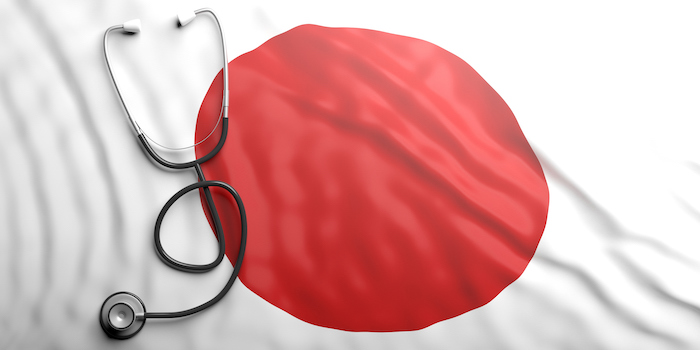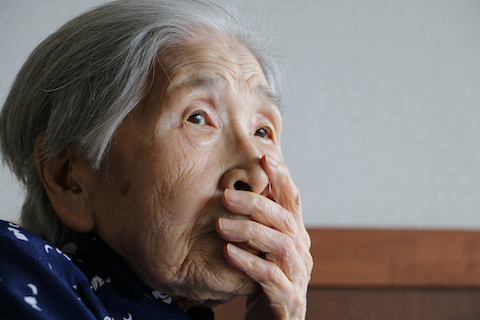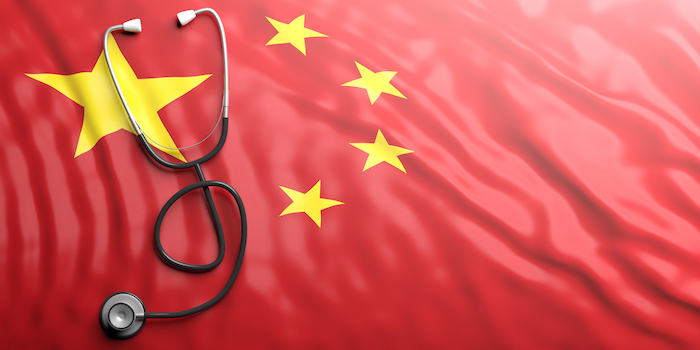The issue of rising health-care costs coupled with aging populations has been a source of deep concern for policy-makers in both China and Japan. In 2017, the total health-care expenditures amounted to approximately C$271B and C$520B in China and Japan, respectively. Meanwhile, the number of citizens over the age of 65 has risen to 152 million in China and 34 million in Japan, constituting 11 per cent of the total population in China and 27 per cent of Japan’s “super aging” society.
To respond to these remarkable challenges, both countries have implemented major reforms, but each country has prioritized different strategies. In China, where the medical system has not kept pace with four decades of accelerated economic development, the government has pursued far-reaching and ambitious strategies to overhaul the country’s medical system. These include:
- establishing three publicly-funded medical insurance programs to provide more than 90 per cent of the population with access to medical service;
- promoting the private sector in both the health-care and senior-care systems, including recently opening the local senior-care market to international investment and participation; and,
- creating new policies to enhance manufacturing standards and promote innovation in the pharmaceutical market.
While the Chinese government promotes the entry of the private sector into the medical system, the effects are yet unknown, and policy-makers are still looking for the proper balance between free market operation and government intervention and oversight.
In contrast to China, Japan, which has a mature medical system, has pursued incremental reforms. Since the mid-1970s, Japan has implemented a three-pronged strategy to address worker shortages and a population that is aging at an alarming rate: 1) promoting the adoption of new, advanced technologies; 2) ramping up immigration of foreign workers; and, 3) digitizing patients’ health records. These efforts, however, have shown limited success in reducing health-care costs due to three key factors: 1) the rising number of medical consultations; 2) a lack of mechanisms to assess the value per output of advanced medical technologies; and, 3) an absence of connectivity among different databases of electronic health records.
This report explores how China and Japan are planning to reform their health-care systems in the years ahead, and also outlines the opportunities for Canadian companies in these two burgeoning markets, the world’s second- and third-largest economies, respectively. The degree of China’s and Japan’s success in addressing the dual challenge of rising health costs and aging populations will affect the future trajectories of their economic growth. What’s more, this issue will have political implications for China. In recent years, the Chinese Communist Party has staked its popular legitimacy on “people-centred” policies, including health reforms, so the regime’s ability to handle this crisis could impact its long-term popularity.
China: A Dramatic Overhaul of the Medical System
Expanding insurance coverage (sort of)
The Chinese health-care system consists of a mix of public and private providers for both insurance and medical services. For insurance, three large, public insurance systems cover most of the population with basic health insurance: the Urban Employee Basic Medical Insurance (UEBMI) for employees working in state and non-state enterprises and the Urban Residence Basic Medical Insurance (URBMI) for other residents in urban areas, and the New Rural Co-operative Medical Scheme (NRCMS) for rural residents. Even though the vast majority of Chinese citizens are now enrolled in one of these three insurance programs, these programs often do not cover the full costs of medical treatment, leaving the patient to pay out of pocket for the remaining costs.
The urban insurance schemes, UEBMI and URBMI, [1] were, until recently, managed by the Ministry of Human Resources and Social Security (MOHRSS), and the rural program, NRCMS, was administered by the National Health and Family Planning Commission. [2] The fragmentation of these two bureaus has resulted in a lack of administrative co-ordination. There are also disparities in compensation rates across these surviving programs. However, the placement of all three programs under the auspices of the newly formed National Medical Insurance Bureau in March 2018 might facilitate better administrative co-ordination, and may even contribute to a future merger of these programs.
Promoting the private sector
As for private health-care insurance, it is a growing market and one that a number of local and international players are looking to enter. In 2016, the Boston Consulting Group, a multinational management consulting firm, and Munich Reinsurance Company, one of the world’s leading reinsurers, estimated this market would grow from RMB241B (C$47.2B) in 2015 to RMB1.1T (C$220B) in 2020. Nonetheless, current regulatory constraints – notably, a maximum ownership of 50 per cent in all insurance ventures operating in China and limitations on the establishment of branch offices in China – are placed on foreign private insurance companies in order to protect local insurers. As a result, the access of foreign private insurance companies into the China market has been limited.

As for hospitals, an estimated 43 per cent are public, with the rest privately owned. Nonetheless, public hospitals account for more revenue as they have higher patient volumes. A public hospital has, on average, 280 beds (with some “super-hospitals” having thousands), while private hospitals have, on average, fewer than 100 beds. Private hospitals are often small, specialized facilities, and are much more expensive than public facilities. They mostly cater to individuals with private insurance, expatriates, and wealthy individuals.
Since 2009, the Chinese government has encouraged the entry of private actors into China’s health-care sector, primarily in order to force reform on public hospitals. Public hospitals charge high medical fees, often overtreating patients by using high-end diagnostic medical devices and prescribing expensive drugs. Moreover, poor transparency of the financial management of these facilities enables public hospital staff to profiteer from the procurement of expensive medical devices. This shady practice enhances hospitals’ expenses by further fuelling patient overtreatment. Meanwhile, these public hospitals can charge high user fees and provide low-quality service because they enjoyed a monopoly in China’s health-care market. Policy-makers are hoping that increasing competition from private operators will compel public hospitals to reform financial management and transparency practices, lower user fees, and improve the quality of patient services.
Increasing oversight
In addition to reforming public hospitals, China is also facing a challenge in exercising oversight of the manufacturing quality, supply systems, and procurement of pharmaceuticals. With more than 5,000 drug manufacturing companies and more than 10,000 distribution companies operating in China, the control systems needed to supervise these companies are massive, and can be difficult to manage effectively. [3] To streamline China’s pharmaceutical sector, in 2016, the Chinese government began enforcing its new Good Manufacturing Practices, which are modelled on World Health Organization and European Union guidelines. However, even though the Chinese government has shown a willingness to address this problem, the sheer complexity and size of the country’s health-care system makes this a Herculean task. The most recent faulty vaccines scandals from 2018 are case in point.
Furthermore, the absence of tools to evaluate both the quality and efficacy of medical procedures undermines China’s efforts to rein in rising medical expenditures. Because of opposition from policy-makers and health-care providers, China does not use key performance indicators (KPIs) – such as staff-to-patient ratios, bed turnover rates, and number of medical errors – to monitor health-care services, although these could effectively uncover inefficiencies in China’s medical system. In the absence of KPIs, decision-makers often make decisions related to staff, patient care, and operations without reliable data.

In addition to the key reforms outlined above, an important, anticipated reform is the acceleration of drug approval processes. Until recently, foreign firms were not allowed to conduct first-in-man clinical trials in China and phase II and III foreign clinical data were not accepted for domestic approval [4]. First-in-man clinical trials are those that have had successful animal or in-vitro clinical trials and are now ready to be tested on human subjects for the first time. In the past, Chinese regulatory agencies refused that these first-in-man clinical trials be performed on Chinese citizens. Furthermore, Chinese regulatory agencies would not accept phase II and III clinical studies done abroad and required companies to conduct them in China. As such, a company bringing a drug to China needed to a) do its first-in-man trials outside of China and b) do its more advanced clinical studies (phase II and beyond) inside of China to gain regulatory approval.
However, going forward, the Chinese government, which is interested in encouraging competition and innovation in the pharmaceutical market, is likely to become more receptive to both clinical trial data generated outside of China and the conduct of first-in-man clinical trials in China. Such a policy shift will benefit foreign companies, as it both saves the cost of reproducing clinical trials in China and reduces the time for obtaining new drug approvals. Meanwhile, the newly-minted State Administration for Market Regulation – which has absorbed the responsibilities of the previous regulator, the China Food and Drug Administration (2013-2018) – reserves the right to conduct inspections of drug manufacturing facilities outside of China.
Finally, as China’s health reform is a work in progress, attention should be paid to how relations between government and the market will evolve. On the one hand, China’s private market is expected to be given more room for growth in areas such as drug and medical device research and development, insurance, hospital management, and senior-care facilities. On the other hand, concomitantly to opening up the health market for the operation of private actors, the Chinese government will also step up its direct involvement in the health sector by increasing government oversight of health services, strengthening disease prevention and control capacities, increasing investment in maternal and child health and health education, and implementing a basic health insurance system. Going forward, Canadian companies that are entering China’s market should keep an eye on the implementation of China’s two seemingly contrasting policies: increasing private sector participation, which enhances the scope for business opportunities, and increasing regulations and oversight of private companies, which might place restrictions on private health services.
Japan: Introducing Incremental Health-Care Reforms

Where China has a health-care system that is rapidly growing, and could be seen as still developing, Japan has a more mature and established health-care system. As such, any changes will be more incremental compared to China, and likely face resistance from established processes.

Japan has a universal public health-care system in which Japanese citizens are required to subscribe to a public insurance program through their employer and pay a monthly premium. This insurance program, which covers most Japanese citizens (70 per cent for citizens under 69 years old), pays for the bulk of medical fees. Nonetheless, there are monthly and annual cap on payments, which are metered to the income of either the household or beneficiary. To be reimbursed for the remaining costs, Japanese citizens can enrol in private insurance programs.
Some pundits have suggested that this universal public health-care system, along with remuneration schemes for the country’s physicians, are responsible for rising health-care expenses. With a universal medical insurance system in place, patients are able to consult health-care providers for low fees and are incentivized to visit doctors quite frequently, especially retired patients who have free time on their hands. Meanwhile, while reimbursement for each service remains low, doctors are compensated per service they provide. Consequently, doctors are incentivized to accept as many patient visits as possible, and conduct a high number of medical procedures. As a result of both low medical fees and this remuneration scheme for doctors, Japan now has one of the highest consultation rates among developed nations. The average number of consultations – 13 per patient per year – is two to three times that of many developed nations. Recent reforms enacted in April 2018 stipulate an initial fee of ¥800 (C$9) per patient for the first visit to a general practitioner, and a heftier charge of ¥5,000 (C$61) per hospital visit without a referral. It remains to be seen whether these modest adjustments will reduce the number of medical consultations and contribute to a decrease in government expenditures.
Adopting advanced technologies
A growing reliance on advanced technologies and more expensive drugs has also increased costs in the Japanese health-care system. In 2015, according to Organization for Economic Co-operation and Development figures, total health expenditure as a percentage of gross domestic product climbed to 10.9 per cent, up from 6.4 per cent in 1995. Indeed, one of the key elements of early Japanese health-care reform (which first took place during the mid-1970s) has been its reliance on advanced technologies. But as the use of these technologies increases, both health-care providers and end-users have found that there is a need for an improved assessment of health technologies to better gauge their true diagnostic value, and to set reimbursement rates that are based on the treatment’s efficacy.
Coping with growing demand and worker shortages

As in China, Japanese health-care reform has also been directly driven by growing demographic pressures. An aging population, low fertility rates, and negative population growth have all put pressure on the Japanese health-care system as it struggles to respond to increasing demand while struggling with workforce shortages.
Switching to electronic records
Finally, as a way to control costs, many institutions have focused on the implementation of unique E-Health Records (EHR). Initially, the objective was to incentivize information sharing, improve health-care quality, and lower costs. Nonetheless, current research indicates numerous issues around implementation, especially the unification of terminology and security. Since there are no uniform standards for the formatting of EHR data on a national scale, there remains a lack of interconnectivity between different databases. A general practitioner’s record might not be compatible with a hospital’s system, restricting the exchange of information. Many critics, therefore, believe that the Japanese government should publish a clear framework to facilitate the sharing of data across different providers.
Overall, health-care reform in Japan has been focused on the introduction of new technologies and methodologies, but rapid implementation without a concerted framework has led to a lack of efficacy. While some of the short-term reform measures have focused on hiring more foreign workers in the country as a way to combat recurrent workforce shortages, innovative technologies are also seen as a way to both reduce the need for more personnel and increase the independence of the country’s elderly. The next step of reform will likely consist of adopting new frameworks to measure the efficacy of these technologies and pursuing reforms that allow for better data sharing among multiple health-care stakeholders.
Implications for Canada
While both China and Japan have adopted different strategies to tackle health-care reforms, the policies currently pursued by each of these countries are creating opportunities for Canadian life sciences companies to enter the Chinese and Japanese markets.
China has long been viewed as a market where Canadian companies go for contract manufacturing of both drugs and medical devices. For many years, companies saw opportunities in China mostly in either establishing integrated manufacturing units or contracting out some of their own more basic manufacturing needs. Also, fear over intellectual property (IP) theft has led many companies to either compartmentalize research (to limit the exposure to risk), relocate personnel to China to monitor their Chinese partners directly, or bypass the market completely in favour of markets with stronger IP protection.
Increased privatization in China, however, has created opportunities for investments in both health-care facilities and research partnerships. Canadian companies can now look to China as more than a manufacturing option. Canada is very strong in life sciences research and development, and Chinese President Xi Jinping’s recent vow to strengthen IP protection could prove a boon to increased research collaboration. Also, opening the door to more foreign-produced products could provide further opportunity for Canadian companies, as the “Made in Canada” label generally generates trust in China. Companies in the health-care sector (especially those in digital health and IT health systems), medical devices (particularly the diagnostics field, targeting both the private and public hospital systems), and nutraceuticals (as self-health is a growing movement for Chinese consumers), could all find great opportunities in China.
As for Japan, Japanese companies are looking for partnerships, especially in the fields of home care and diagnostics. There are emerging opportunities for Canadian businesses looking to partner in the market niches of Class II and III medical devices (medical devices that have a moderate-to-high risk to the patient, and devices that have a high risk to the patient, respectively), therapeutics and diagnostics (especially in diseases related to aging such as dementia, cancer, and heart disease), digital health (especially applications that promote self-care), and university research centres. Other fields will find few opportunities in Japan right now: nutraceutical companies will face a saturated and sophisticated market (and will need a unique ingredient or a twist unique to Canada to enter this market), while contract manufacturing organizations and contract research organizations will find that local Japanese companies prefer to utilize local resources over outsourcing to international companies. Likewise, Class I medical device (devices that present a low to moderate risk to the patient) providers will find a market that is already well served by companies from the Asia Pacific region.
In closing
While both markets present excellent opportunities for Canadian companies, there are a number of roadblocks that companies have to take into consideration before entering these Asia Pacific markets.
In China, barriers can take the form of bureaucratic obstacles and administrative hurdles, such as ownership regulations, that can make entry for any foreign company especially challenging. As for Japan, there are a number of country-specific regulations and standards, especially in relation to health care and life sciences that may surprise new companies. For example, in Western countries, the drug regulatory agency both evaluates and approves new drugs, whereas in Japan, the Pharmaceuticals and Medical Devices Agency (PMDA) evaluates new drugs, and then forwards its recommendation for approval to the Ministry of Health, Labour and Welfare (or MHLW). This increases the number of agencies handling market entry and can lead to complicated approval processes. Oftentimes, Canadian companies are well prepared to enter more “natural” markets (such as the United States and Europe), as these countries regularly hold seminars and webinars to explain their regulatory standards, and there are broader cultural similarities. Japan and China, in contrast, can be more difficult to understand for a newcomer company, from both a legal and cultural perspective.
In both cases, partnering with a local Chinese or Japanese company can be a way to fast-track market entry and handle these potential trade barriers. Participation in trade missions and trade shows in the targeted country will enable Canadian businesses to meet multiple potential partners in person and select those with which there is the strongest affinity. The importance of face-to-face meetings cannot be underestimated in both of these countries. As such, Canadian companies should remember that many technologies developed in Canada are well positioned to address specific needs to both healthcare systems, and that finding the best commercialization pathway (be it finding a partner, setting up a local office or working with Canadian trade officials) will be key in insuring commercial success.
As President and host of the G20 in 2019, Japan declared that aging population will be high on the agenda. It is likely that Japan will promote a discussion on health and pension reforms and the digitization of society as means for achieving fiscal stability amid mounting expanses on the care of the elderly. The coming G20 meetings, thus, present a platform for Japan, China, Canada and other member countries to generate a new strategy for handling this problem, and also explore ways for productive cross-country collaboration. Looking ahead, it is possible that the outcome of this year’s G20 meeting will shape the opportunities for Canadian medical sector and life sciences businesses to enter and prosper in China and Japan’s elderly care sectors.
[1] The UEBMI was established in the early 1990s for the urban employed population, while the URBMI was setup in 2007 to target urban resident without employment, specifically the elderly and children. (The Path to Integrated Insurance Systems in China, The World Bank, June 2010)
[2] The administration of China’s urban and rural health insurance programs have remained fragmented up to the present. During the late 1990s, when the NCRMS was first established as a pilot program, the Ministry of Labor and Social Insurance (MOLSS) (an early incarnation of the MOHRSS) was reluctant to manage it, as the central government refused to finance this policy experiment. Thus, the Ministry of Health (precursor of the latter National Health and Family Planning Commission) assumed responsibility for the NCRMS. Only after the NCRMS expanded and the Central government was willing to channel extensive financial support for it, did the MOLSS start to lobby for control of this program. For more information on this historical episode, see Jane Duckett. (2011). The Chinese State's Retreat from Health: Policy and the Politics of Retrenchment. London: Routledge.
[3] BIO 2018 Conference: Fireside Chat: Blueprint for China’s Healthcare Reform, Director General GE Yanfeng, Social Development Research Division, Development Research Center of the State Council.
[4] Most countries follow a similar regulatory pathway for drug approval. Phase I studies (first-in-man) are usually done on small populations (15 to 30 healthy individuals) to demonstrate drug safety. This is followed by Phase II studies, done on a larger population of patients with the condition (50 to 200 patients) to demonstrate that the drug is likely to be effective while continuing to demonstrate safety. This concludes with a phase III study done on a very large population (in the thousands) to assess clinical efficacy (insure that the drug works).




